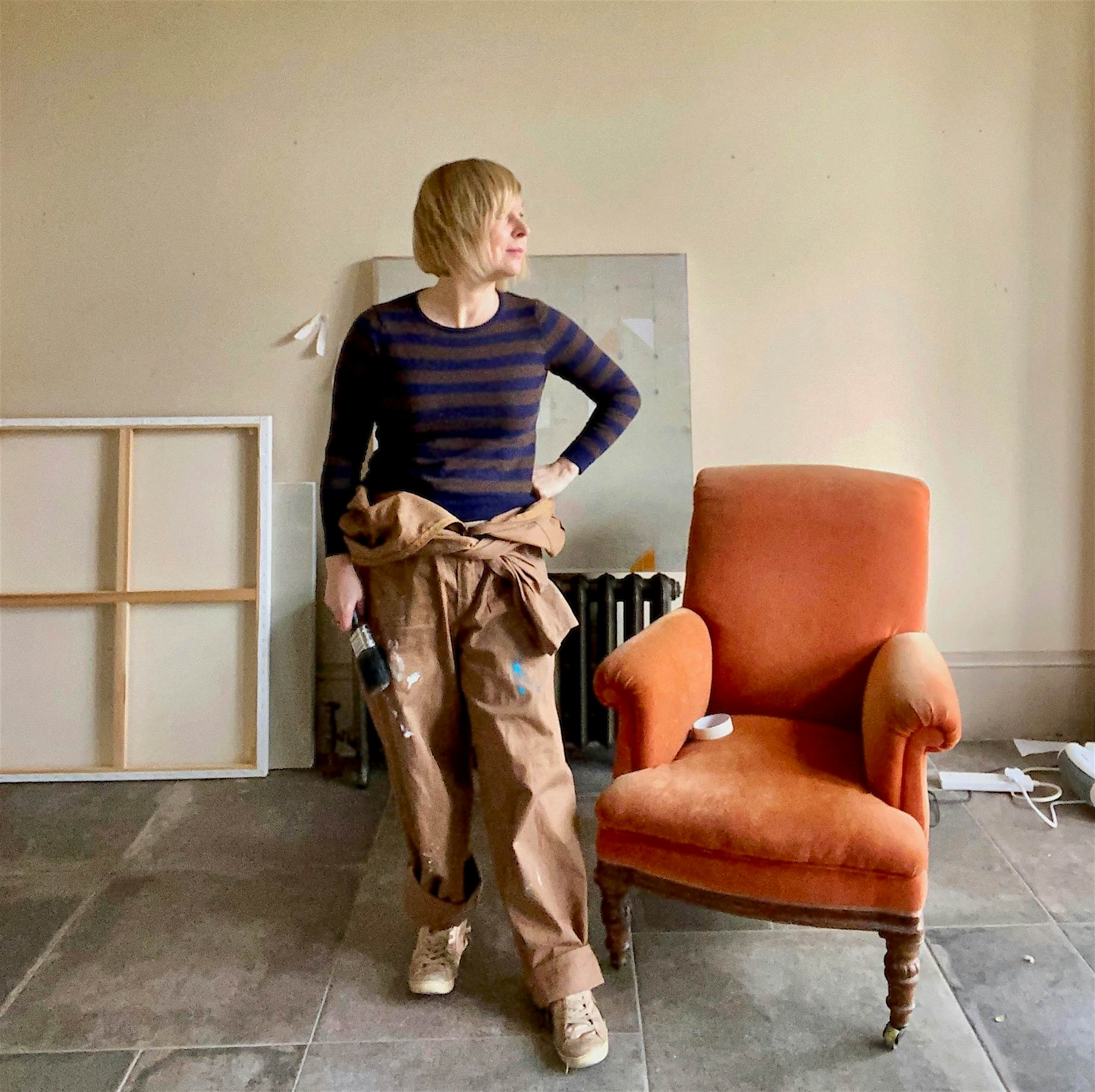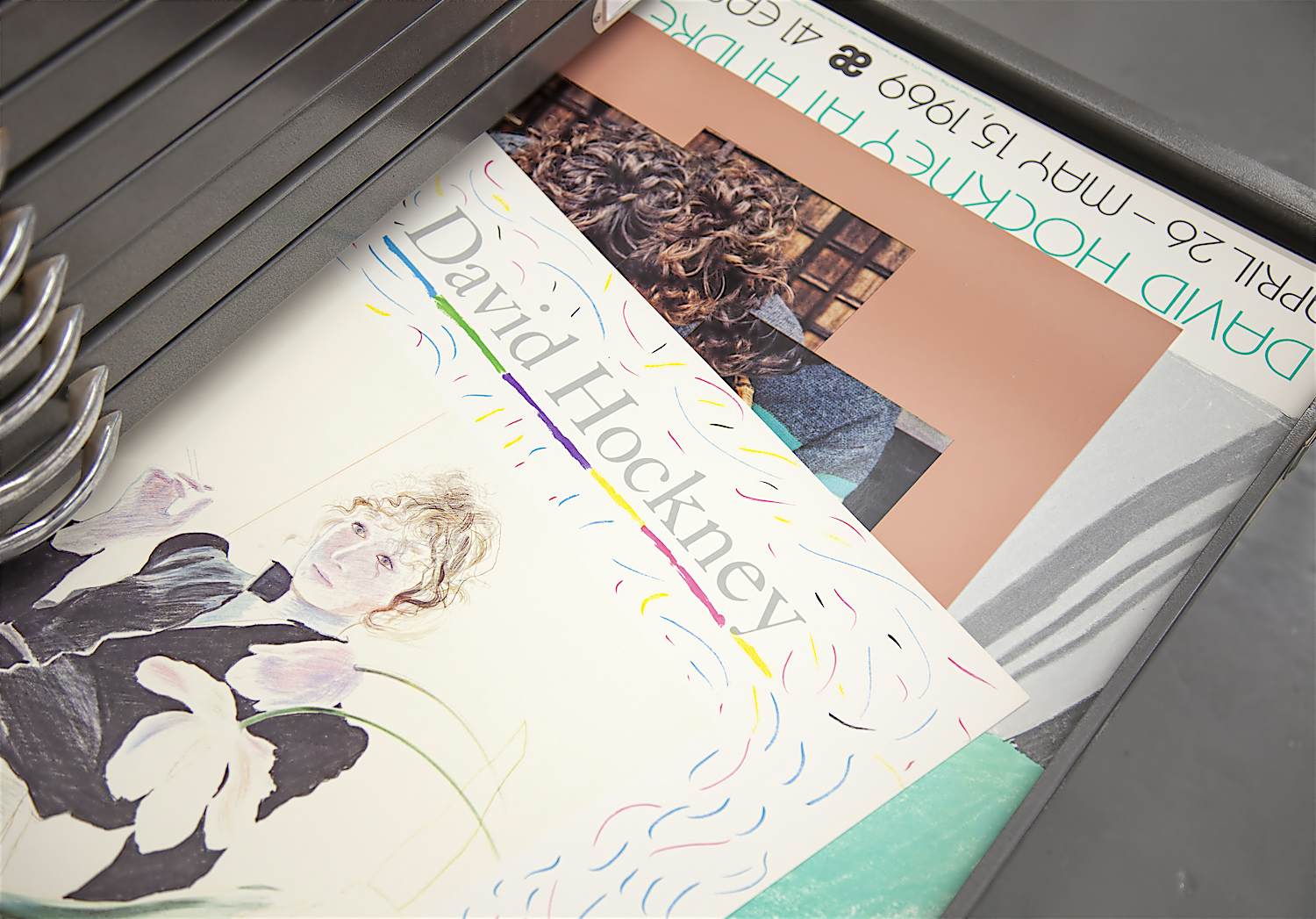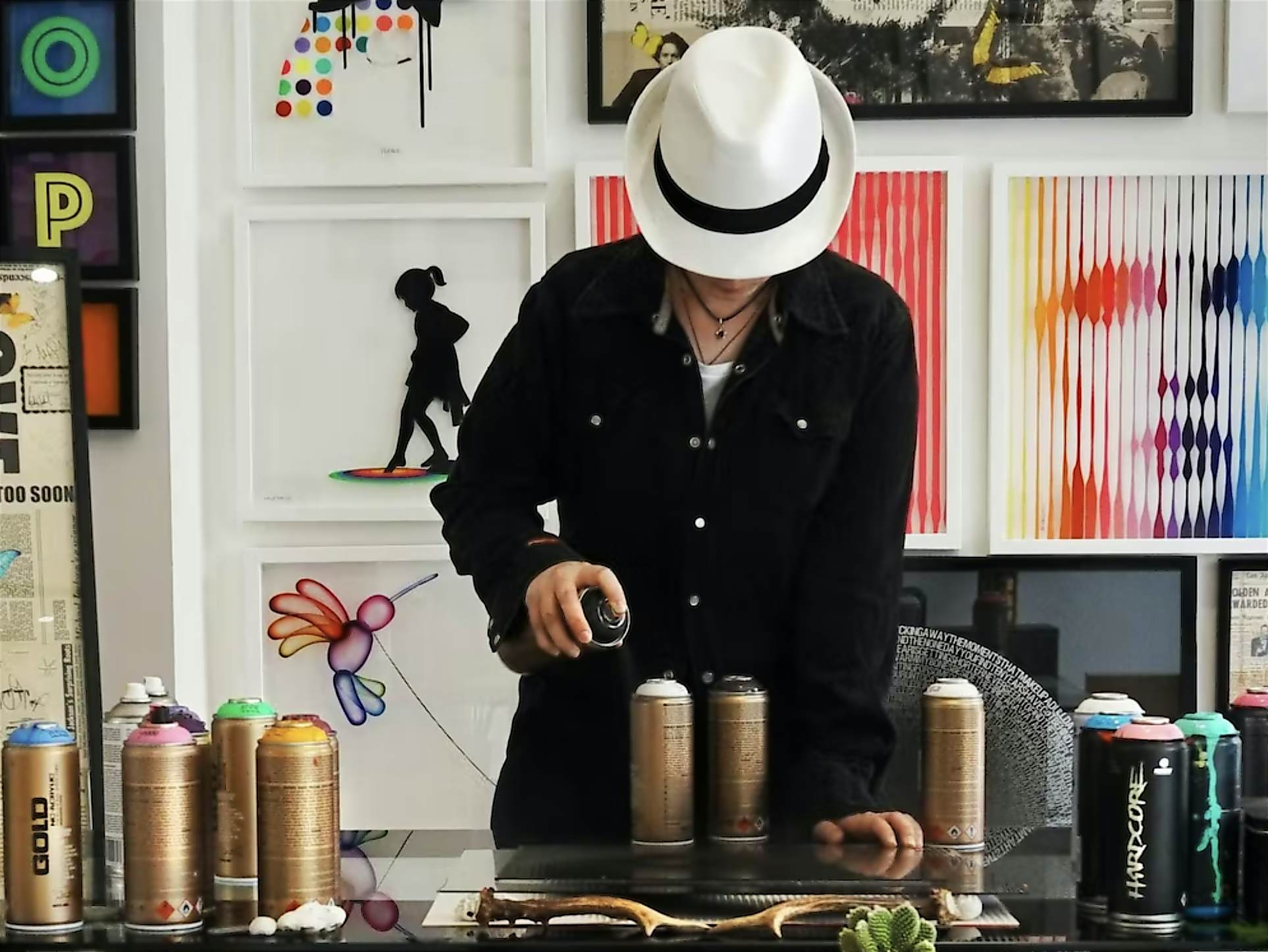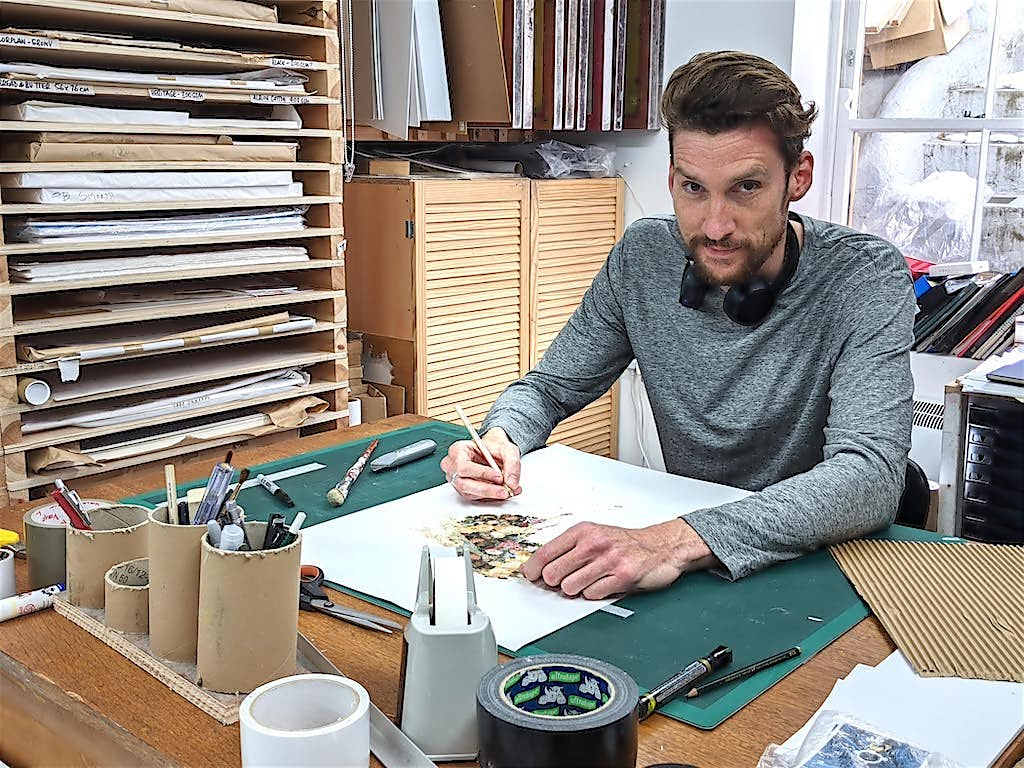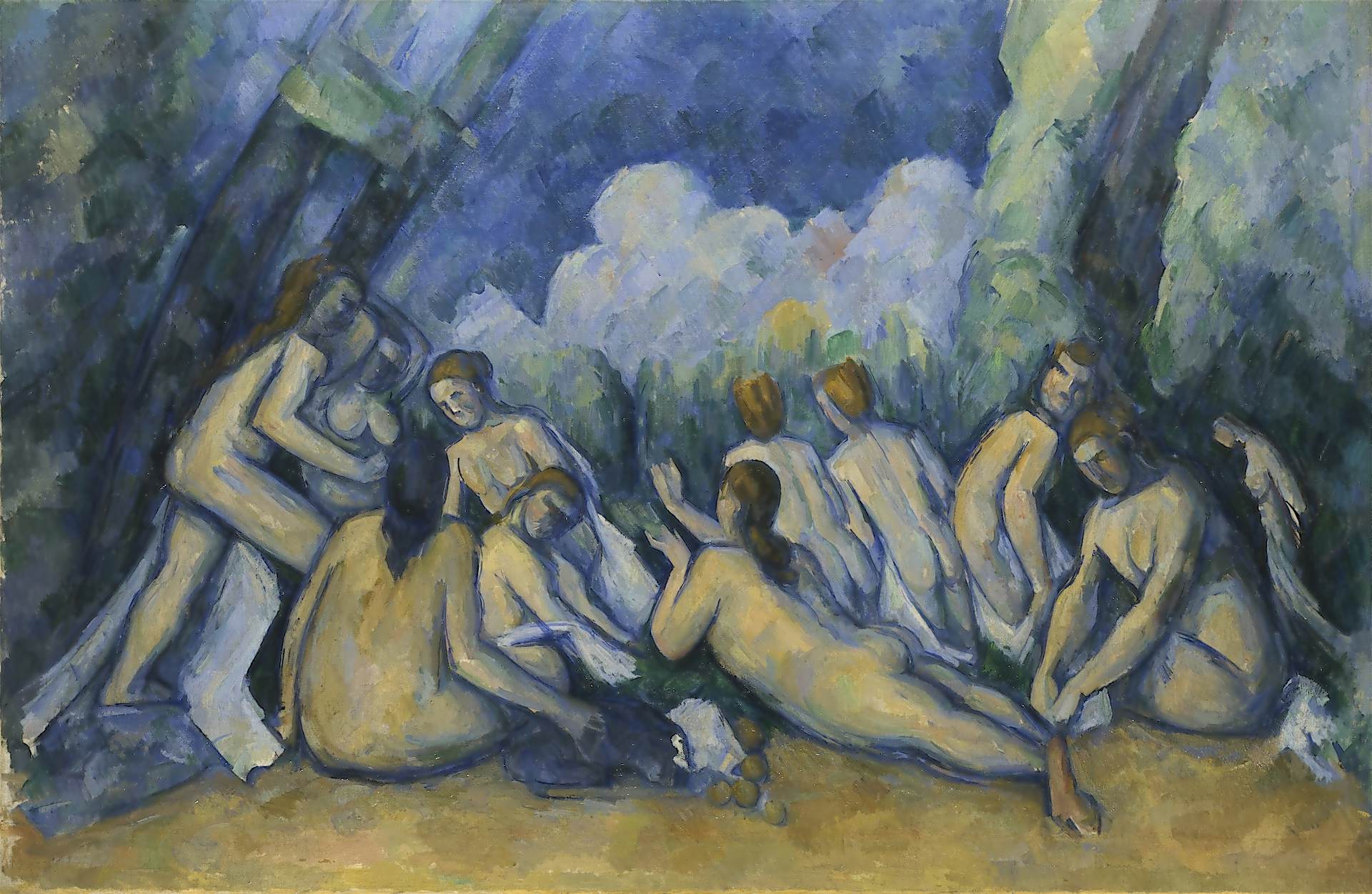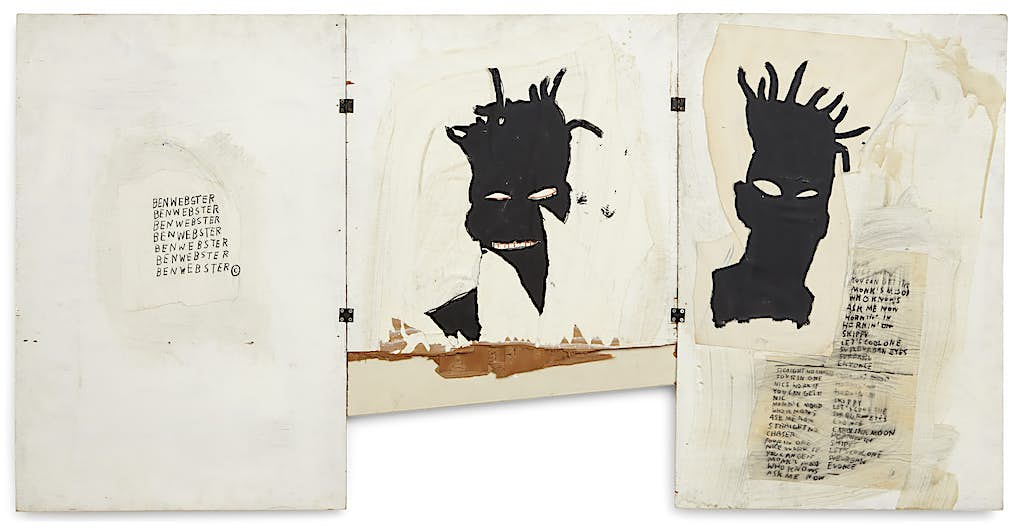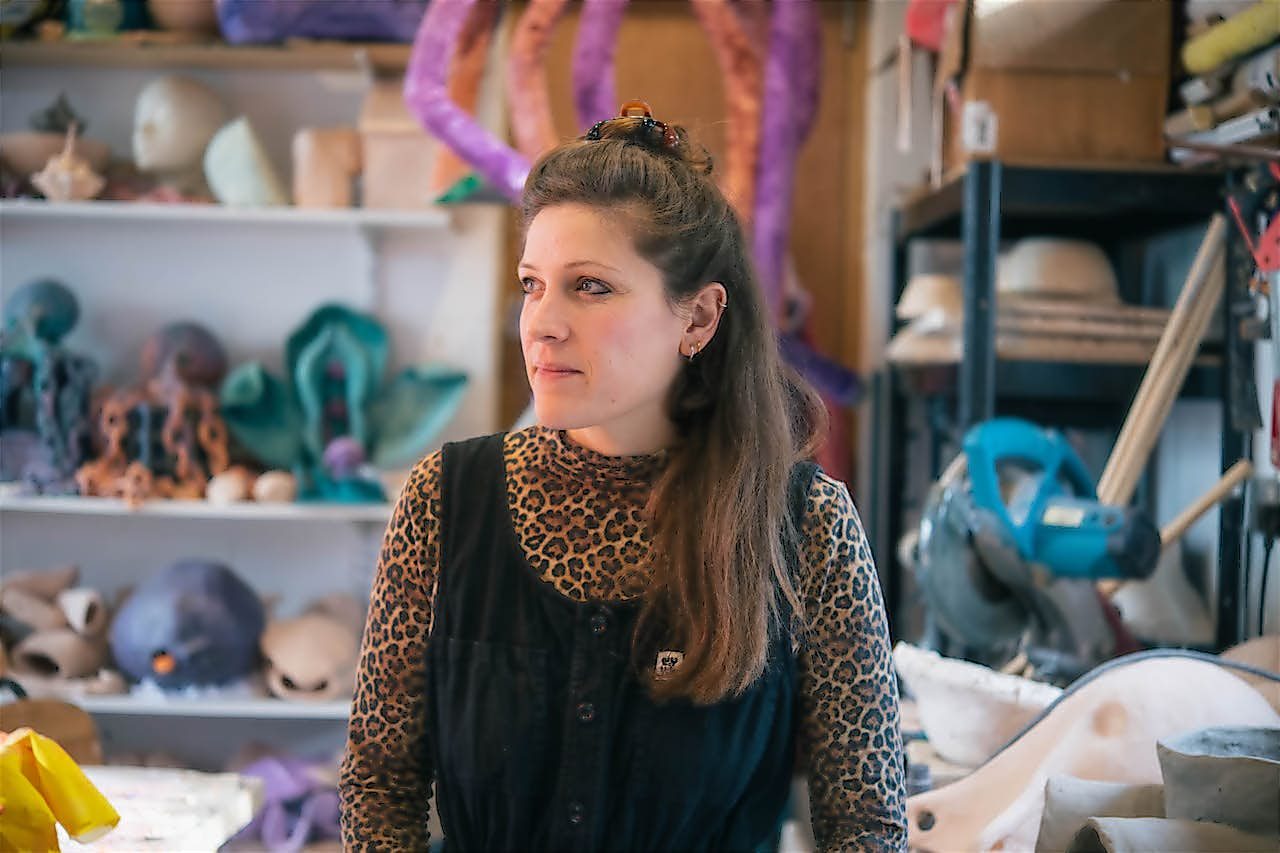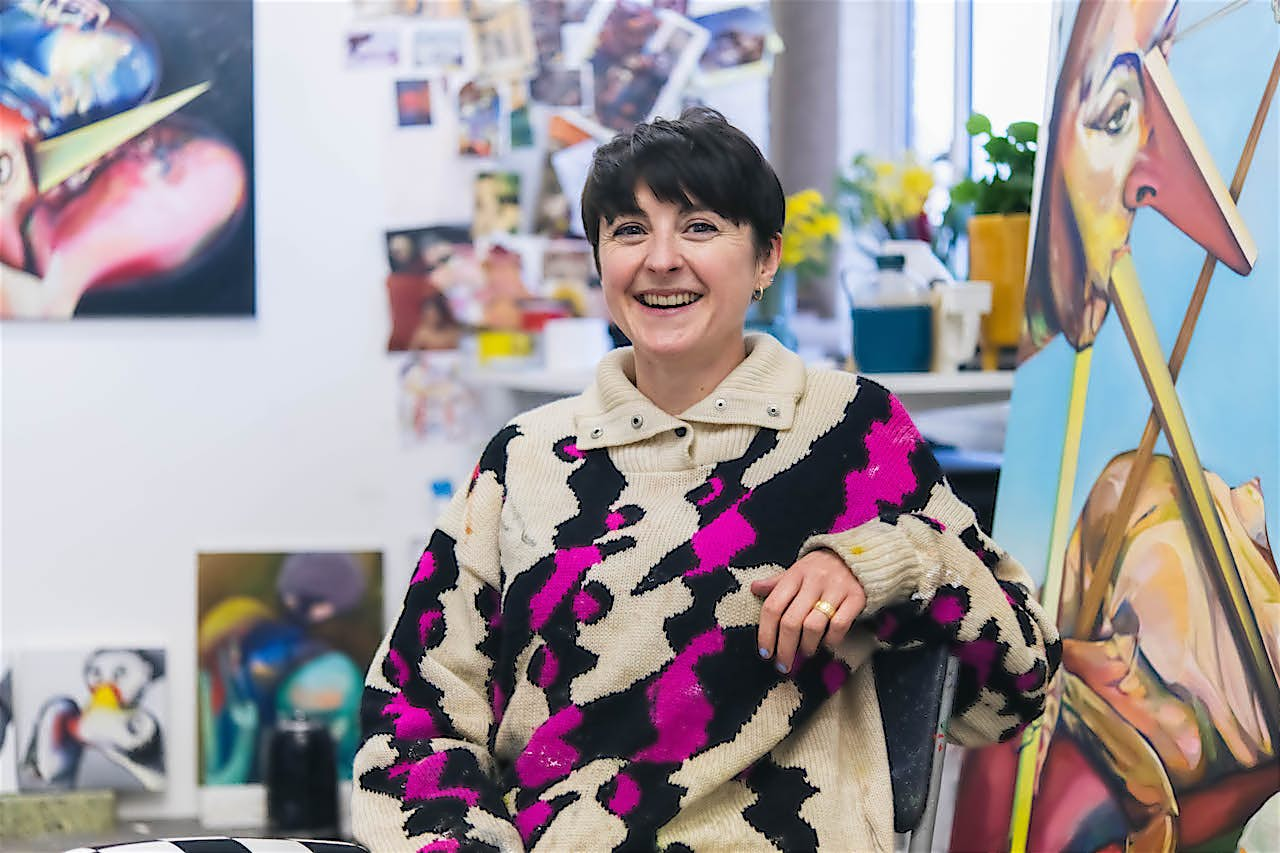Paul Cézanne’s innovative and influential, ‘Bathers (Les Grandes Baigneuses)’
Reading time: 2 mins
Painted over the final three decades of his life, Paul Cezanne’s series of ‘Bathers’ amounted to over 160 drawings and paintings. We take a closer look at one of the most iconic paintings from the series.
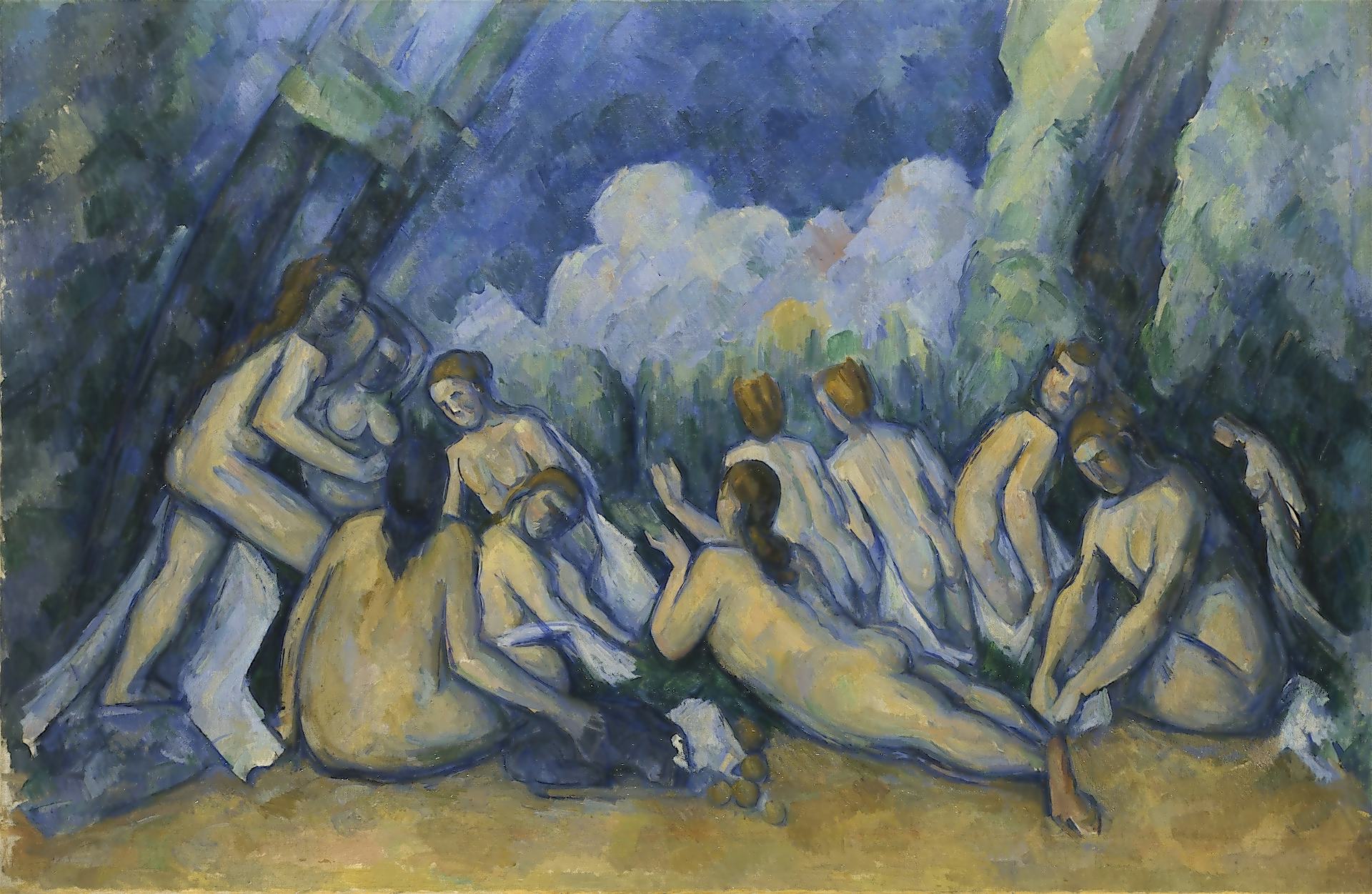
The artistic tradition of bathers
As a subject, bathers have fascinated artists since the Renaissance who strove to depict idealised female bodies in harmony with nature. Works such as Sandro Botticelli’s ‘Primavera’ and Titian’s ‘Venus Rising From The Sea’ included depictions of nymphs and goddesses in woodland and coastal scenes.
However, whilst his artistic predecessors were revered for their realistic rendition of the female form, Cézanne’s looser, more abstracted bathers divided critics.
Simplified forms
Cézanne was interested in reducing the human figure to three forms: cylinder, cone and sphere – simplifying them down in a similar way to his still life paintings of oranges, pears and apples.
‘Bathers (Les Grandes Baigneuses)’ was created in the final 10 years of Cézanne’s life. Measuring 127.2 x 196.1 cm, the original is one of three large scale paintings in the series.
Look closely, and you will spot the inclusion of a small gathering of oranges beside the sleeping black dog in the centre of the composition – a subtle nod to his previous body of work.
Shy and reclusive in his later years, Cézanne felt uncomfortable hiring models to pose for him. As he had previously created numerous sketches during visits to the Louvre, his sketchbooks became his point of reference.
According to Rosalind McKever, curator of paintings and drawings at The National Gallery, it is possible that the nude female figure sitting on the right of ‘Bathers (Les Grandes Baigneuses)’, with her arms leaning forward, has been taken from a study of a Venus sculpture in the Louvre. While the woman laying on her front facing away from the viewer bears resemblance to a sculpture titled, ‘Sleeping Hermaphroditus’.
Mark making
Through his use of colour, Cézanne’s lyrical bathers blend into the landscape. Using cobalt blue to outline the figures he both highlights their importance in the scene, whilst simultaneously bringing them into harmony with their natural surroundings. His rhythmic use of line marries the bathers with the swaying Provençal trees.
Innovation
‘Bathers (Les Grande Baigneuses)’ saw an ever-changing evolution of form, perspective and abstraction through its lengthy genesis.
Affected by his Impressionist contemporaries – Monet, Renoir and Gauguin – Cézanne had adopted a hue-based colour palette during his time socialising with them in the 1870s – a decision that greatly developed his style.
Crucially, his reduction of form provided groundbreaking steps into Post-Impressionism, leading subsequent twentieth-century artists to venture deeper into paths of abstraction.
Legacy
In 1907, a retrospective of Cézanne’s work including ‘Bathers (Les Grand Baigneuse)’ was exhibited at the Salon d’Automne, winning considerable praise.
Receiving critical recognition during the last decade of his life, the pioneer of Post-Impressionism also gained appreciation from his fellow artists. Prominent painters including Pablo Picasso, Henri Matisse, Paul Gauguin, Kazimir Malevich and Pierre Bonnard purchased his artwork.
So taken was Matisse with the Bathers series that he took out a loan in 1899 to purchase the painting ‘Three Bathers’, (1879-89). A notable Fauvist in his early career, Matisse’s use of colour was greatly inspired by Cézanne’s work.
The influence of Cézanne can be seen throughout Matisse’s long artistic career. Fast forward to his cut out collage works from the 1950s and you will discover ‘La Baigneuse Dans Les Roseaux’, (1952).
Painted in blue Gouache, the segments of paper form a nude female bather in the centre of an aqueous scene. This abstract figure is a wonderful example of Cézanne's effects on modern art, far into the twentieth century.
Bathers (Les Grandes Baigneuses) featured in the EY Exhibition: Cézanne at Tate Modern from 5th October 2022 – 12th March 2023.







